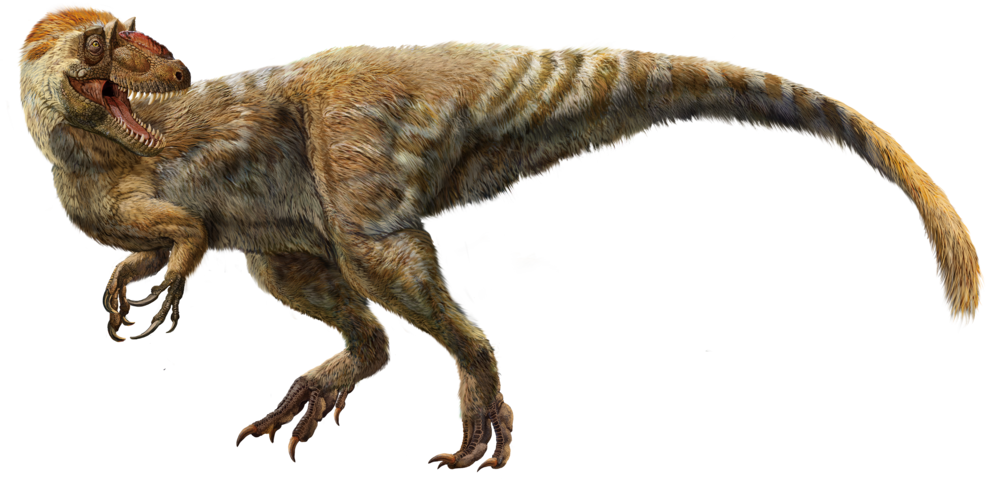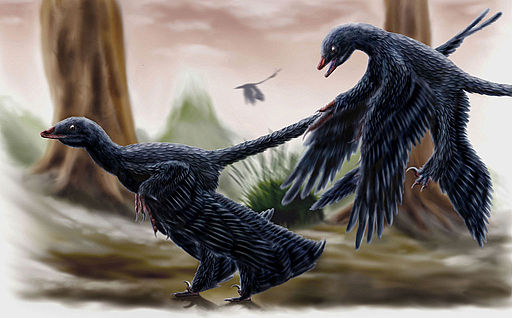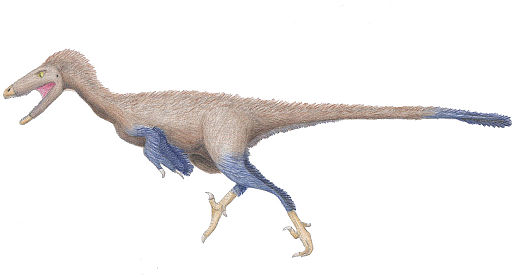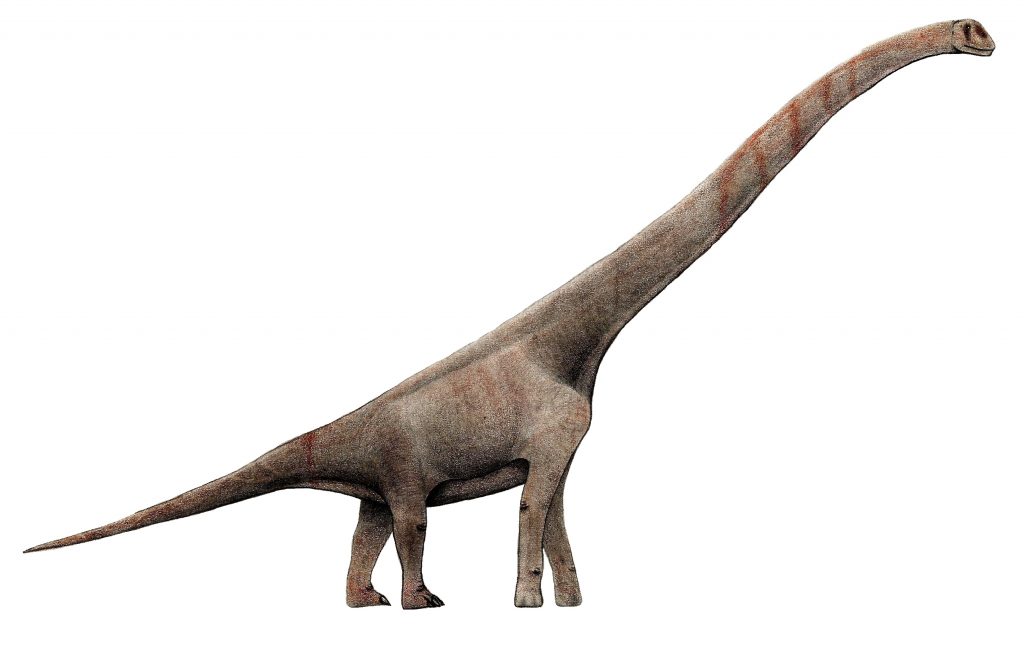Fun Facts About Dinosaurs
Written by Aindrila Jana, a third-year undergraduate student
Did you know that Dinosaurs roamed on our Earth for 170 million years? But, the question is – how did they originate, and when and how did they become extinct?
Written by Aindrila Jana, a third-year undergraduate student
Quick facts about dinosaurs
Dinosaurs were gigantic reptiles that lived on Earth about 245 million years ago. They went into decline about 66 million years ago.

Did you know that Dinosaurs roamed on our Earth for 170 million years? That’s an amazing fact about Dinosaurs that you may not have known 🙂
But, the question is – how did they originate, and when and how did dinosaurs become extinct?
The truth is that despite the fact that dinosaurs lived on our planet for so long, and grew from tiny creatives to mammoth ones, we still don’t seem to know much about how they originated.
It is hard to collect information on creatures that existed so long ago. We only have fossil remains that are fragile and incomplete. At times, we only have skin impressions to interpret for certain species! We have to understand their lifestyle, their birth, and their physiology from very little physical evidence.
Here’s all about Dinosaurs…

Dinosaurs were a group of reptiles that lived on Earth about 245 million years ago. They went into decline about 66 million years ago. Some historians believe that not all dinosaurs died at that time, and some, they believe evolved into birds about 150 million years ago.
What does the name mean?
The name dinosaur originates from the Greek words deinos – which means terrible or “fearfully great”, and sauros, which means reptile or lizard. Basically meaning – a big, scary lizard! This name was derived in 1841 by Sir Richard Owens on the basis of discovered fossils.
Earlier, they called the dinosaurs dragons! Many believe that myths of monstrous lizards like dragons, wyrms, sea-serpents, etc, must have originated from dinosaur fossil remains.
Paleontologists have classified dinosaurs according to the time period they lived in, which includes:
The Triassic period: 251–201 million years ago
Known as the Age of Reptiles, dinosaurs were the dominant land-dwelling organisms in this period.
Jurassic period: 201-145 million years ago
The dinosaurs flourished in this period, known as their Golden Age! If the term seems familiar to you, remember the famous movie franchise Jurassic Park?
Cretaceous period: 145–66 million years ago
Oceans formed all over Earth in this period. The dinosaurs must have had to learn to adapt to the formation of these vast water bodies.
Cenozoic period: 66 million years ago to the present day
This period follows the extinction of the dinosaurs.
Paleontologists are scientists who study the history of life on Earth through the fossil record
Here’s a look at some features of dinosaurs
- They had an upright stance, with legs perpendicular to their bodies. (This feature is what sets dinosaurs apart from other reptiles)
- They had a hole in the skull between the eye socket and the nostril
- Their ankle could bend like a hinge
- They laid eggs, like other reptiles
- Dinosaurs lived on land – barring some exceptions, like some birds, for example, penguins
- They could omnivorous, carnivorous, or herbivorous.
- Certain species hunted in packs or foraged for plants in groups. There were solitary hunters too.
- Much can be known from the footprint a dinosaur leaves behind. The number of claws, the manner of claw curvature, and the claw arrangement reveal a lot.
- There is evidence now that non-avian dinosaurs might have feathers too! The feathers may have attracted mates or provided insulation.
- At one point, dinosaurs lived on all seven continents.
- Dinosaurs lived on land – barring some exceptions, like some birds, for example, penguins
What do penguins have to do with dinosaurs?
Paleontologists believe that penguins that existed 61 million years ago might have been really big, up to 5 feet tall!
And, what’s more, is that these may have evolved alongside dinosaurs, says a study! That’s yet another amazing fact about dinosaurs!
Today, Emperor Penguins are the largest existing penguins. They are 100 centimeters tall and weigh 22-45 kg.
Let’s get to know all about dinosaurs.
Top 20 Fun Facts About Dinosaurs
Here’s a superb list of the most interesting fun facts about dinosaurs…
1. Argentinosaurus, weighing up to 100 tonnes which is the same weight as around 15 elephants, is believed to be the biggest dinosaur to have ever existed. This sauropod’s remains were discovered in Argentina.
2. The first genus of non-avian dinosaurs to be officially named is Megalosaurus or “the great lizard”. Charles Dickens, the famous British author, included it in his novel Bleak House. The Megalosaurus remains were found in 1822, at Oxfordshire, United Kingdom.
3. Tyrannosaurus Rex is known to be the most ferocious dinosaur. Informally called the T-Rex, it is supposed that it lived in the north-western region of North America.
4. The little bird-like plant-eater Lesothosaurus, which was only the size of a chicken, was the smallest dinosaur. Its remains have been found in South Africa, Africa.
5. Pegomastax is the strangest dinosaur ever known! It’s believed to be a cross between a parrot and a porcupine. Found in South Africa, this dinosaur was formally recognised only in 2012. It weighs less than a housecat.
6. Aves or modern birds are believed to be the descendants of dinosaurs as they have skeletal features similar to some avian dinosaurs.
7. Among the roughly 700 extinct species of dinosaurs known today, the first dinosaur to be described in a historical account by Robert Plot in 1677, was the Megalosauru
8. A 30-foot-long dinosaur, a cousin of Tyrannosaurus Rex called Yutyrannus Huali was a fully feathered dinosaur, known to use its feathers to keep itself warm. The name means – “beautifully feathered tyrant”, a mix of Mandarin and Latin. Its remains were discovered in China’s Liaoning Province.

Image Credit: https://usa.pnso.org/
9. A colourful turkey-sized dinosaur called Sinosauropteryx had an orange-and-white striped tail. It has a bandit mask pattern, commonly exhibited by birds now. The patterns may have helped it camouflage in open environments.

Wikimedia Commons
10. Dinosaurs crawled like human babies. A hatchling dinosaur, says a 2019 research paper, called Mussaurus patagonicus likely walked on all fours.
11. Dinosaurs drank the same water on Earth as us.
12. For more than 230 million years, dinosaurs have been here on Earth.

13. Some believe that the Titanosaurs were the largest dinosaurs. They might have been bigger than the Argentinosaurus! These sauropods were found in Patagonia, Argentina as well.
14. The odd-looking Gallimimus, resembling an ostrich with arms, had beaks instead of teeth. Its name means chicken mimic. They were among the fastest dinosaurs!
15. The sauropod, Nigersaurus, replaced its teeth every fourteen days! One of its skulls discovered by Paul Sereno had 500 slender teeth.
16. Micropachycephalosaurus is the longest name of a dinosaur.
17. Four-legged dinosaurs were generally herbivores, but not all herbivorous dinosaurs were four-legged. Some herbivores were able to stand upright, so as to reach the greenery of tall plants.
18. The Microraptor had four wings. Though it did not have the musculature for flying, computer simulations show that it could glide from tree top to tree top.

19. The smallest dinosaur egg was the size of a golf ball, discovered in Japan. With the dimensions of a quail egg, the parent dinosaur has been named Himeoolithus murakamii.
20. Troodon is believed to be the most intelligent dinosaur. Its brain was proportionally larger than those found in living reptiles. It may have been as smart as modern-day birds.

IJReid via Wikimedia Commons
Here’s another fun fact about dinosaurs – Sauroposeidon was the tallest dinosaur known – at 18.5 metres (60 feet)!

Where are Dinosaurs Found?
Initially roaming on the single supercontinent Pangea (a big continent that existed some 350 million years ago), dinosaurs are believed to have roamed every continent on Earth.
The supercontinent Pangea began breaking up into separate land masses only in the Early Jurassic Period.
Mapping the Fossils
We know about where dinosaurs roamed by unearthing their fossils.
Quickly, a fossil is something physical that is found that proves that a particular animal or plant existed. It could be some preserved remains or other things, like marking they made in the ground, etc.

Credit: Natural History Museum, UK
Fossils are not the actual bones or teeth! They are just traces or remains left of bones, eggs, footprints, teeth, etc. These hard parts are pressed between sedimentary layers in the rock layers of the Earth. The pressure causes these organic remains to be replaced by minerals that harden into rocks.
There are two types of fossils: body fossils (fossils left behind by body parts) and trace fossils (fossils left behind in sediment like footprints, root impressions, etc.).
Ok, so where are the dinosaur fossils found?
However, the largest number of dinosaur fossils are found in three main locations – China, Argentina, and North America. If you include Antarctica, the presence of dinosaurs has been physically recorded on all seven continents.
Also, different kinds of fossils are found in different parts of the world. Here’s a look…
The hotspot for Cretaceous Fossils is China. The Liaoning province northwest of Beijing has recorded several dinosaur fossils.
The first dinosaur bone believed to be of Megalosaurus was recovered from a limestone quarry in Oxfordshire by William Buckland.
Also, the United Kingdom has a large number of dinosaur fossils, mostly found in coastal sites such as the Isle of Wight and the Jurassic Coast of Dorset; the clay quarries of Surrey (Baryonyx); and the limestone and clay quarries of Oxfordshire and the Cotswolds.
The sedimentary rock layer, the Morrison formation is where fossils of popular dinosaurs, like the Stegosaurus and the Brontosaurus were first found, according to the National Geographic Society.
Fossils of Stegosaurus species have been found by digging 150-million-year-old rocks. Tyrannosaurus Rex fossils have been found buried under 67 million years old rocks in the western United States.
Canada’s Dinosaur Provincial Park in Alberta is a single site uncovering the fossils of 40 different dinosaur species, notably including the greatest variety of species.
Who discovered dinosaurs?
Like most things ancient, there are a number of people, historians, and paleontologists who are said to have made contributions to discovering dinosaurs.
Here’s a quick list…
Ancient Chinese writings dating back to 2,000 years ago have references to “dragon” bones, which are believed to be talking about dinosaur fossils.
Reverend Robert Plot, a curator of an English museum, discovered a large thigh bone in England in 1676, which is believed to be probably of a dinosaur named Megalosaurus.
William Buckland, the first professor of geology at Oxford University, correctly identified it as a dinosaur fossil.
Mary Ann Mantell discovered fossilized bones during a walk in Sussex, England in 1822. The bones looked similar to an iguana skeleton, so the reptile was named as Iguanodon, the second dinosaur to get its name.
Ultimately, in 1842, Sir Richard Owen named the family of fossils Dinosauria. Hence, the name “dinosaur” was coined.
New evidence came by the late 1800s, and Othniel Marsh and Edward Cope, two American scientists competed and were together responsible for the discovery of 136 new species of dinosaurs.
Paleontologists call that period the Bone Wars. They are both considered the founding practitioners of paleontology in the American continent.
Today, paleontologists like Jack Horner, Dong Zhiming, Paul Sereno, and Patricia Vickers Rich continue to discover more fossils and thus newer dinosaur species!
Even India has its famous paleontologist, Birbal Sahni! Sahni worked with flora species over fauna species so he did not have much to do with dinosaurs.
You May Also Like
Fun Facts About Cats
Facts About Lions
Smallest Dogs in 2022

Better Your Child’s G.K. In 3 Minutes – Get This Free Newsletter
Get fun facts, simple and easy news, quizzes, and lots of other interesting things to read in your mailbox – for free! It’s what we call GK-on-the-go!
I Kid You Not now has a large readership across India and also parts of the world. If you want to write for us, you can submit your story here. You can also apply to become a news anchor. Apply here



Comments